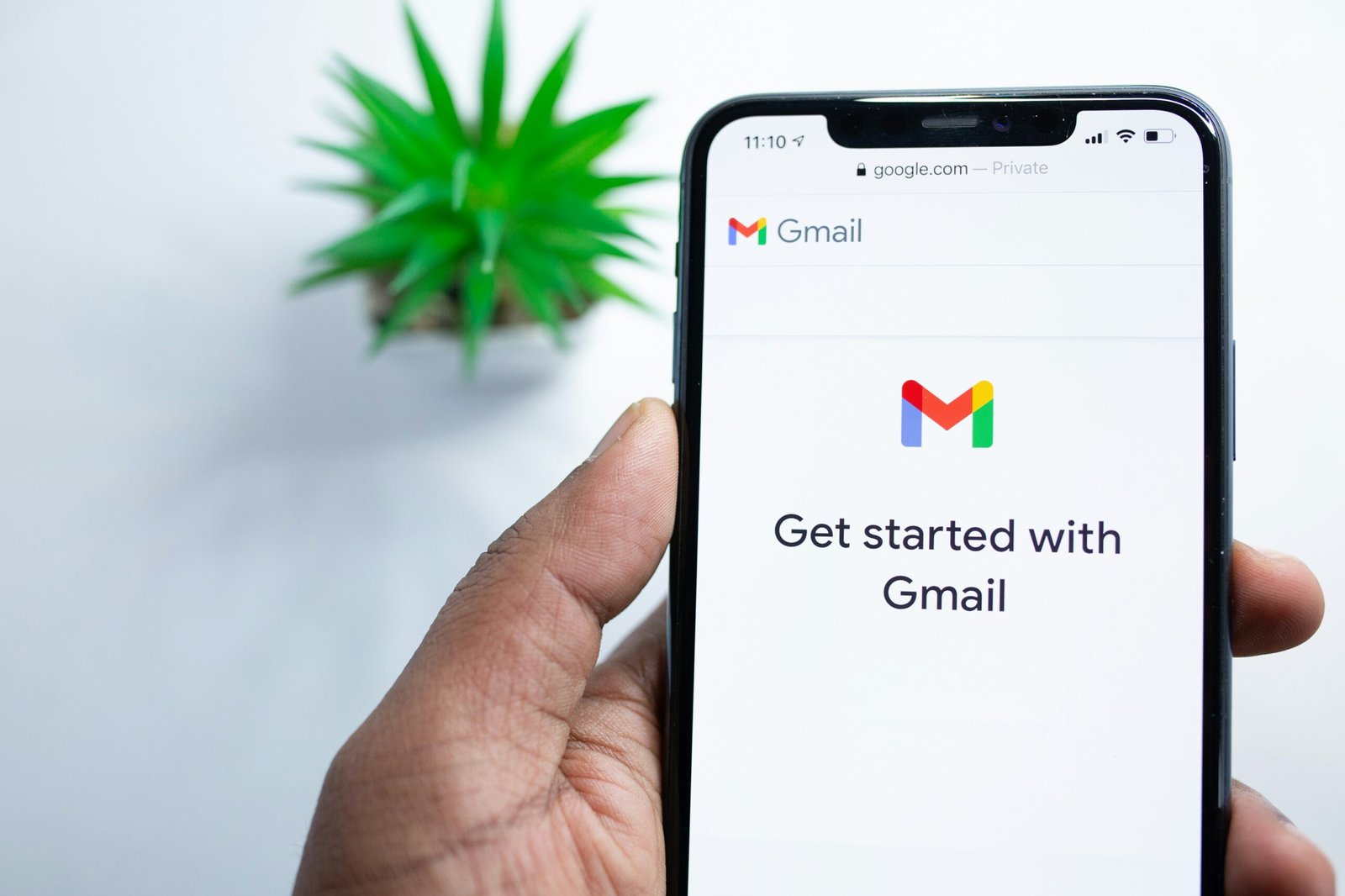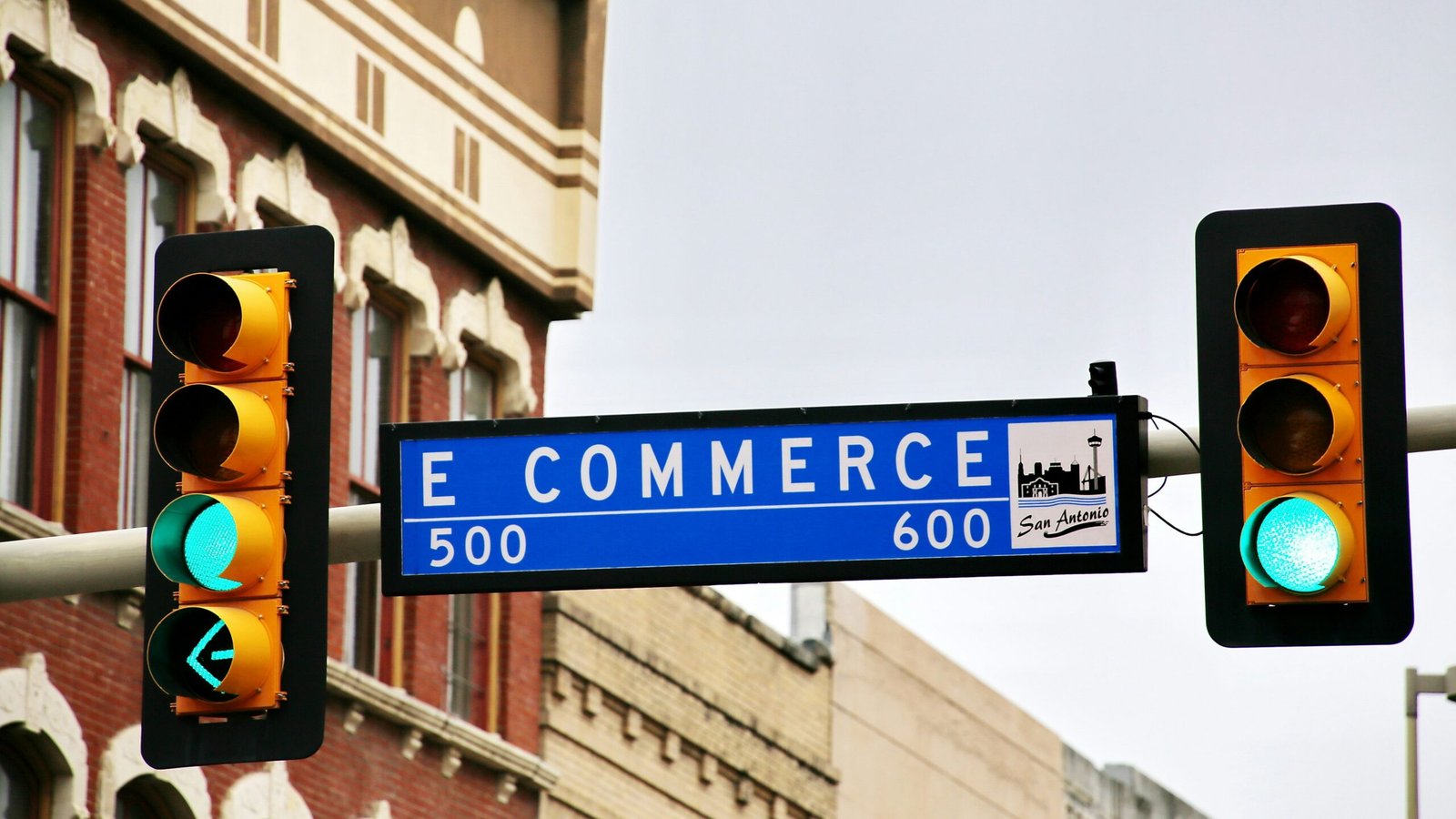Harnessing the Power of Email Newsletters for B2B E-Commerce Lead Generation
Introduction to Email Newsletters in B2B E-Commerce
Email newsletters are a vital component of digital marketing strategies, particularly in the realm of B2B e-commerce. Essentially, these newsletters serve as a direct communication channel between brands and their audience, allowing companies to share valuable content, updates, promotions, and industry insights. The fundamental principle behind email newsletters lies in their ability to foster engagement, maintain relationships, and drive lead generation.
The effectiveness of email newsletters in B2B e-commerce can be attributed to their personalized approach. By targeting specific segments of a business’s audience, companies can tailor content that resonates with the needs and interests of potential clients. This level of customization not only enhances user experience but also increases the likelihood of conversions. Engaging content such as case studies, testimonials, and informative articles can establish a brand’s expertise and authority in the industry, further incentivizing potential leads to engage with the brand.
Email newsletters function by capturing subscribers through various methods, including sign-up forms on websites, social media integrations, and during the checkout process. Once a user opts in, brands have the opportunity to nurture these leads over time. Utilizing marketing automation tools, businesses can schedule and send newsletters, ensuring that subscribers receive timely and relevant information that aligns with their interests.
Moreover, the analytical capabilities associated with email marketing provide brands with insights into subscriber behavior. Metrics such as open rates, click-through rates, and conversions enable businesses to continuously refine their email strategies. This iterative process is crucial for maximizing the effectiveness of newsletters in lead generation.
In summary, email newsletters are indispensable for B2B e-commerce brands seeking to enhance their marketing strategies. Through engaging content, personalized communication, and the utilization of data analytics, companies can effectively harness the power of email newsletters to generate leads and strengthen customer relationships.
The Importance of Lead Generation for B2B E-Commerce
Lead generation represents a critical component of the B2B e-commerce landscape, profoundly influencing the success and growth of online businesses. In contrast to B2C models, B2B transactions involve a more complex process marked by longer sales cycles and multiple decision-makers. Consequently, attracting and retaining customers in this environment requires a strategic approach to lead generation that acknowledges these unique challenges.
One of the main hurdles B2B companies encounter is establishing trust and credibility with potential clients. B2B buyers tend to conduct extensive research before making purchase decisions, often requiring relevant information that addresses their specific needs and concerns. This tendency means that businesses must not only generate leads but also nurture them through targeted content and communication strategies. Here, email newsletters emerge as a potent tool in maintaining ongoing engagement with prospective clients, as they deliver valuable insights and resources directly to the inbox of interested parties.
Additionally, the rise of digital platforms has intensified competition among B2B firms in various sectors. Companies must differentiate themselves from their competitors through meaningful interactions, which can be effectively achieved by employing email newsletters as part of an integrated lead generation strategy. These newsletters can enhance brand recognition and elevate customer retention rates by providing subscribers with industry news, product updates, and best practices that are instrumental in their decision-making processes.
Overall, lead generation in the realm of B2B e-commerce is paramount for sustained growth and profitability. Email newsletters serve to bridge the gap between companies and potential buyers, significantly increasing the chances of conversion while establishing a rapport that fosters long-term customer relationships. Leveraging this powerful tool helps businesses navigate the intricacies of the B2B landscape, ultimately driving revenue and success.
Creating a Compelling E-Newsletter Strategy
Developing an effective e-newsletter strategy is crucial for cultivating a successful B2B e-commerce lead generation initiative. The foundation of a compelling e-newsletter begins with identifying the target audience. Understanding who your potential customers are—including their demographics, preferences, and behaviors—enables you to tailor your content to meet their specific needs. Creating detailed buyer personas can significantly aid in visualizing and segmenting your audience, thus facilitating a more personalized approach that fosters engagement.
Once you have identified your target audience, the next step is list segmentation. Segmenting your email lists allows for customization of the content, ensuring that the right message reaches the right recipients at the right time. This process can involve categorizing subscribers based on their industry, purchase history, or engagement levels. Effective segmentation will enhance the relevance of your e-newsletters, thereby increasing open rates and click-through rates, which are vital metrics for measuring success.
Defining clear objectives is another critical component of a successful e-newsletter strategy. Objectives provide direction and criteria for success measurement. Whether the aim is to generate leads, drive website traffic, or nurture existing relationships, establishing specific, measurable goals will allow you to assess the effectiveness of your e-newsletter campaigns. Additionally, integrating key performance indicators (KPIs) such as response rates, conversion rates, and regional performance can offer deeper insights into overall performance.
Moreover, A/B testing is an invaluable tool in this process, as it helps refine your strategy based on real-world data. By experimenting with subject lines, content formats, and sending times, you can discover what resonates best with your audience. This iterative process fosters ongoing improvement, ensuring a dynamic e-newsletter strategy that can adapt to changing market conditions and audience preferences.
Crafting Engaging Content for Your Audience
Creating compelling content for your email newsletters is essential for effectively engaging a B2B audience in e-commerce. The types of content that resonate most include educational articles, industry news, product updates, and case studies. These forms of content not only provide value to your readers but also position your brand as an authoritative source in your field.
Educational articles should focus on topics that directly address the pain points of your audience. By offering insights, tips, or how-to guides, you can help your potential leads solve their problems, thereby building trust and credibility. For instance, a guide on “Maximizing Your E-Commerce ROI” delves into strategies that many B2B companies seek, making it shareable and impactful.
Additionally, keeping your audience informed about industry news is crucial. Highlighting recent developments, trends, and statistics reinforces your positioning as a thought leader. You can curate relevant news articles and present your insights or opinions, offering your audience a synthesized view of what’s happening in their industry.
Product updates should not only inform recipients about new offerings but also illustrate their benefits and application in real-world scenarios. Highlighting unique features or advantages in your email newsletters can pique interest and drive inquiries, leading to better engagement.
Furthermore, incorporating case studies into your newsletters provides tangible examples of how your products or services have successfully addressed the needs of other businesses. These narratives can significantly enhance your credibility and witness, illustrating measurable success and satisfaction.
In summary, the key to crafting engaging content for your B2B e-commerce newsletters lies in providing value-driven information that resonates with your audience’s interests and needs. By incorporating educational content, industry news, product updates, and case studies, you can effectively attract leads and foster long-term relationships. Aim to engage your audience with quality content, as this will not only enhance your brand image but also encourage recipients to take actionable steps towards your offerings.
Design and Formatting Best Practices
Effective design and formatting are crucial components of email newsletters, particularly in the context of B2B e-commerce lead generation. A well-structured layout enhances user experience, encourages engagement, and ultimately drives conversions. To create an appealing email newsletter, ensure that your layout is clean and organized. Utilize a grid system to align content pieces, which helps in guiding the reader’s eye towards the most important information.
Responsive design cannot be overlooked in today’s mobile-oriented world. With a significant percentage of users accessing emails on handheld devices, it is essential to create newsletters that adapt seamlessly to different screen sizes. Ensuring that your design remains functional and aesthetically pleasing on both desktop and mobile devices will enhance readability and engagement rates.
Incorporating visual elements such as images, graphics, and infographics can greatly enhance the effectiveness of your email newsletters. High-quality images are particularly important in B2B e-commerce, as they can showcase products and services in a visually compelling way. However, it is vital to optimize the file sizes of these visuals to ensure that email load times are quick, reducing the risk of users losing interest.
Aside from visuals, the choice of typography plays a key role in how content is consumed. Use legible fonts and appropriate font sizes to ensure that all text is easily readable. Maintaining sufficient contrast between text and background colors will further improve readability. Moreover, employing a clear hierarchy in your design—using headings, subheadings, and bullet points—can help break up large blocks of text and facilitate easier understanding of the information presented.
Ultimately, by focusing on these design and formatting best practices, B2B e-commerce businesses can optimize their email newsletters, leading to improved engagement and higher lead generation potential.
Utilizing Email Automation and Personalization
Email automation has revolutionized the way businesses approach lead generation, particularly in the realm of B2B e-commerce. By employing automated email campaigns, businesses can streamline their communication processes, distribute consistent messaging, and significantly reduce the time spent on repetitive tasks. Automated systems allow marketers to schedule emails to be sent at optimal times based on recipient behaviors, thus maximizing engagement and ensuring that their newsletters reach potential leads when they are most receptive.
Furthermore, incorporating personalization techniques into these automated emails enhances the relevance of the content delivered to recipients. Personalization goes beyond simply addressing the recipient by their first name; it involves tailoring the email’s content based on user behavior, preferences, and previous interactions with the brand. For example, sending targeted newsletters featuring products that align with a lead’s industry or interests can greatly improve open rates and conversion rates. By leveraging data analytics, businesses can gain insights into customer preferences, enabling them to create newsletters that resonate with their audience.
The benefits of using email automation and personalization in lead generation are profound. Automated campaigns allow for a consistent reach without the manual burden often associated with traditional methods. Additionally, personalized content fosters a strong connection between the brand and its leads, enhancing the chances of engagement. In an age where consumers are bombarded with information, tailored communications stand out and are more likely to lead to meaningful conversations. This strategic blend of automation and personalization positions businesses to effectively capture and nurture leads, ultimately driving growth in the competitive B2B e-commerce landscape.
Measuring the Success of Your Email Newsletters
To effectively assess the impact of your email newsletters on lead generation in B2B e-commerce, it is vital to monitor several key performance indicators (KPIs). These metrics provide insight into how well your newsletters resonate with the audience and contribute to your overall marketing goals.
One primary KPI to consider is the open rate. This metric reflects the percentage of recipients who opened your email compared to the total number of emails delivered. A high open rate indicates effective subject lines and targeting, while a low open rate may suggest the need for improvement in these areas. It is beneficial to establish a benchmark based on industry standards, which can help you gauge performance over time and facilitate adjustments to enhance engagement.
Another critical metric is the click-through rate (CTR), which measures the percentage of individuals who clicked on links within your email. This KPI demonstrates how compelling your content is and whether it drives recipients to take the desired action, such as visiting your website or signing up for a webinar. A strong CTR signifies that your email content is not only relevant but also encourages further engagement with your brand.
Conversion rates, which indicate the percentage of recipients who complete a desired action—such as filling out a lead form or making a purchase—are also essential for evaluating your email newsletters’ effectiveness. Tracking conversions allows you to understand how well your newsletters convert leads into customers, ultimately contributing to revenue growth.
Finally, implementing A/B testing can enhance your approach to email marketing. By experimenting with various elements of your newsletters, such as subject lines, layouts, or calls-to-action, you can identify what resonates most with your audience. Continuous testing and adjustment of your email strategies will lead to improved performance metrics and, ultimately, greater success in lead generation.
Challenges and Solutions in Email Newsletter Campaigns
Email newsletters can be an effective tool for B2B e-commerce lead generation; however, companies often encounter challenges that hinder their success. One of the primary issues is the risk of emails being filtered as spam. This reduction in deliverability can significantly impact the reach and effectiveness of a newsletter. To counter this, brands should focus on whitelist strategies, encouraging subscribers to add their email addresses to their contact lists. Additionally, utilizing verified email domains and maintaining a transparent opt-in process can enhance trust and ensure better deliverability rates.
Another significant challenge is maintaining subscriber engagement over time. With a plethora of content available, it is not uncommon for subscribers to lose interest. To combat this, e-commerce brands should invest in segmenting their audience based on user behavior, needs, and preferences. Tailored content that addresses the specific interests of different segments is more likely to resonate with recipients, thereby boosting engagement. Consistently analyzing metrics such as open rates and click-through rates can also provide insights to refine newsletter content and strategies further.
Compliance with regulations, particularly the General Data Protection Regulation (GDPR), poses another challenge for B2B companies. Organizations must implement transparent data collection practices to ensure that subscribers are aware of how their data will be used and stored. Providing clear options for opting-in and opting-out is essential. Moreover, conducting regular audits on email lists to remove inactive subscribers can help maintain compliance and improve overall engagement rates. By addressing these challenges through effective strategies, B2B e-commerce brands can harness the power of email newsletters to drive lead generation effectively.
Future Trends in Email Newsletters for B2B E-Commerce
As we look towards the future of email newsletters within the B2B e-commerce landscape, several trends are anticipated to significantly influence the effectiveness of lead generation strategies. One of the foremost advancements is the continued integration of artificial intelligence (AI) and machine learning into email platforms. These technologies enable businesses to personalize their email content to align closely with the preferences and behaviors of their target audience. By analyzing user engagement data, companies can tailor newsletters to address specific interests, thereby increasing open rates and conversions.
Another notable trend is the rising importance of mobile optimization. With a growing number of professionals accessing emails via mobile devices, businesses must ensure that their newsletters are easy to read and navigate on smartphones and tablets. This shift towards mobile-first design not only enhances user experience but also boosts engagement rates, as convenience plays a crucial role in consumer decision-making processes.
Moreover, the incorporation of interactive content within email newsletters is expected to gain traction. Features such as polls, surveys, and quizzes provide an engaging experience that can capture the attention of B2B customers, encouraging them to take action. This interactivity not only enriches the reader’s experience but also enables brands to collect valuable insights into customer preferences and behaviors.
Additionally, the growing emphasis on sustainability is likely to shape the way businesses approach their email marketing strategies. Companies that highlight their commitment to environmentally friendly practices in their newsletters tend to resonate well with increasingly conscious consumers. By showcasing sustainable sourcing, eco-friendly practices, or corporate social responsibility initiatives, businesses can enhance their brand image and attract like-minded customers.
In conclusion, keeping abreast of these future trends will be essential for B2B e-commerce brands aiming to leverage email newsletters effectively. By adopting advanced technologies, optimizing for mobile, incorporating interactive content, and focusing on sustainability, companies can enhance their lead generation efforts and stay competitive in an ever-evolving market.
Related Article: 7 Benefits of Having an E-Newsletter for Your B2B E-Commerce







